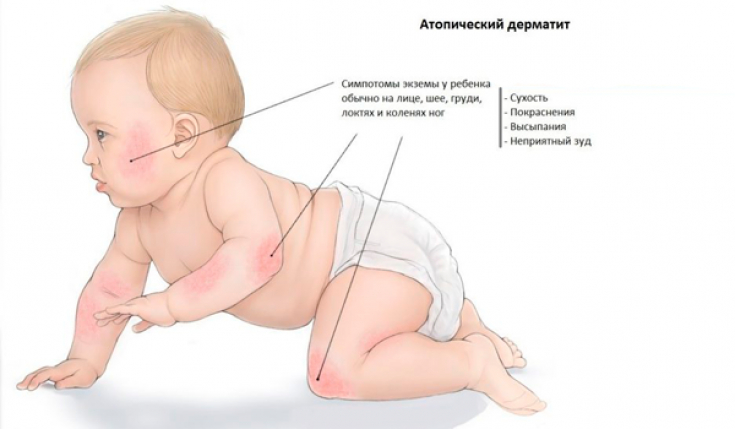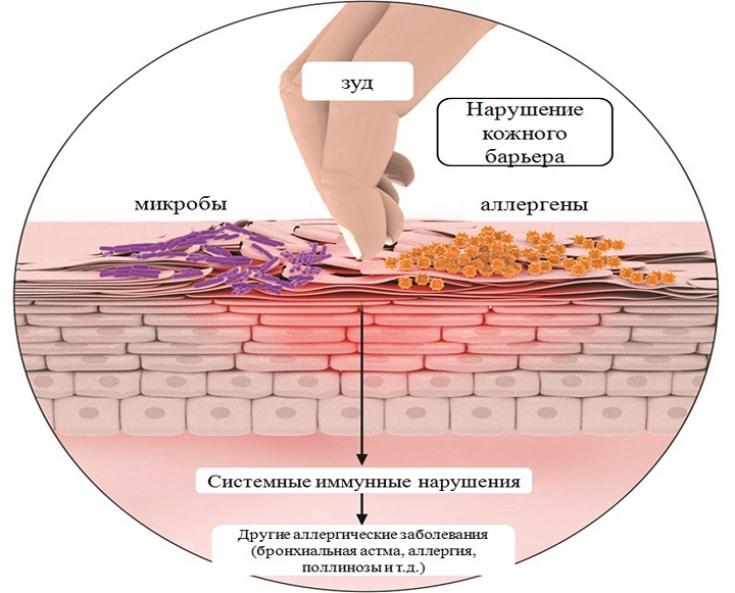Atopic diseases are among the most common chronic childhood pathologies. These include eczema (atopic dermatitis), bronchial asthma, rhinoconjunctivitis, urticaria, etc.
The pathogenesis of these diseases is associated with increased production of immunoglobulins E and is due to both genetic factors and environmental influences.
Find out in our article on estet-portal.com the most relevant approaches to the prevention of atopic dermatitis in childhood, which are recommended by world practices in the field of immunology, allergology and dermatology.
Diet for atopic dermatitis in children
New recommendations from the American Academy of Pediatrics Committee on Nutrition and Section on Allergy and Immunology have now been published on the beneficial effects of early introduction of food allergens into the diet of young children with atopic dermatitis and the impact of breastfeeding on these diseases.
Follow us on Instagram!
Ten years ago, world pediatricians recommended a diametrically opposite approach to the nutrition of children with a complicated family history of allergies or atopic dermatitis. This approach included the use of formulas based on cow's milk protein hydrolyzate for breastfeeding, it was recommended to exclude peanuts and other allergens from the diet; the introduction of cow's milk, chicken eggs, peanuts and fish into the baby's diet was recommended to be postponed until he reaches 12 months. However, during the follow-up over the next 8 years, it was found that the introduction of allergens into the diet was postponed and such a low-allergenic diet does not prevent the development of atopic dermatitis.

After these studies, recommendations for the use of hydrolyzed formulas and dietary compliance were changed to more conditional (although their positive role in reducing the risk of atopic dermatitis has so far been confirmed), and recommendations for restricting the diet for nursing mothers were generally absent. Since then, more evidence-based evidence has begun to develop with the aim of developing new clinical guidelines and recommendations for the prevention of the development of atopic dermatitis in children with a burdened family history.
What pathological conditions are often accompanied by chronic itching
Maternal dietary restrictions
There is no convincing evidence that any restriction of maternal diet reduces the risk of developing atopic dermatitis. But, according to one systematic review, mothers' consumption of various fruits, vegetables, fish, vitamin D-rich foods during pregnancy and lactation, and their adherence to certain elements of the Mediterranean diet, further reduced the incidence of atopic dermatitis in children.
Allergic eczema may be a factor in the development of food allergies
Features of the influence of natural feeding of children on the incidence of atopic dermatitis and other allergic diseases:
1) Natural feeding during the first 3-4 months of a child's life reduces the risk of developing and manifesting bronchial asthma in children under 2 years of age
2) According to some data, any type of natural feeding (exclusively breastfeeding or mixed) that lasts more than the first 3-4 months of a child's life can delay the development of broncho-obstructive syndrome up to 5 years or more
3) It has been confirmed that exclusive breastfeeding for the first 3-4 months of a child's life reduces the risk of developing atopic dermatitis,
Research is under way on the relationship between the duration of breastfeeding and the risk of food allergies.
Introduction of food allergens for atopic dermatitis tendencies
According to new clinical data, there is no association between delayed introduction of food allergens, the use of a low-allergenic diet in a child and a decrease in the development of atopic dermatitis. In contrast, the most significant change in the recommendations is evidence of the positive impact of early introduction of allergens, in particular peanut-containing products, in child-friendly forms.
This thesis was brought to light by the large-scale study LEAP (Learning early about peanut - Early acquaintance with peanuts).
The target group for this recommendation is children with moderate to severe atopic dermatitis and/or hen's egg protein allergy. They are recommended to introduce products containing peanuts in accessible forms at the age of 4-6 months (children with moderate atopic dermatitis are recommended to be introduced at 6 months).
\
The basis for this recommendation was the hypothesis that a violation of the barrier function of the skin in atopic dermatitis is a trigger of an allergic response, while oral allergens, on the contrary, strengthen the tolerance of the immune system. To date, there is not enough data on the effectiveness of the early introduction of other allergens for the same purpose, in particular chicken egg protein, but research continues.
Specific immunotherapy makes it possible to forget about atopic dermatitis
So, contrary to the opinion, entrenched in pediatric practice, restricting the mother's diet during breastfeeding is not the main and effective method for preventing the development of atopic dermatitis in children. Currently, the most effective way, from the point of view of evidence-based medicine, is to promote the maximum duration of breastfeeding in children up to 12 months.
Filaggrin gene mutation as a cause of atopic dermatitis







Add a comment